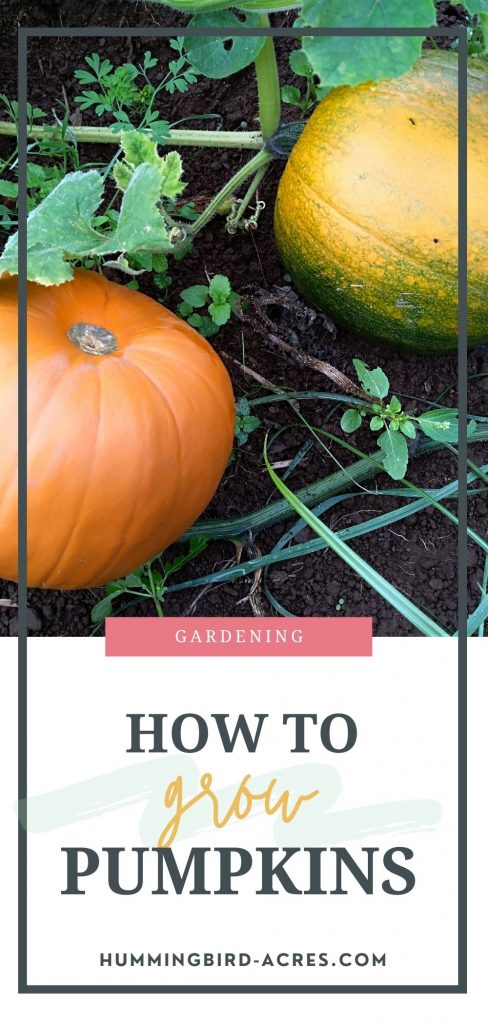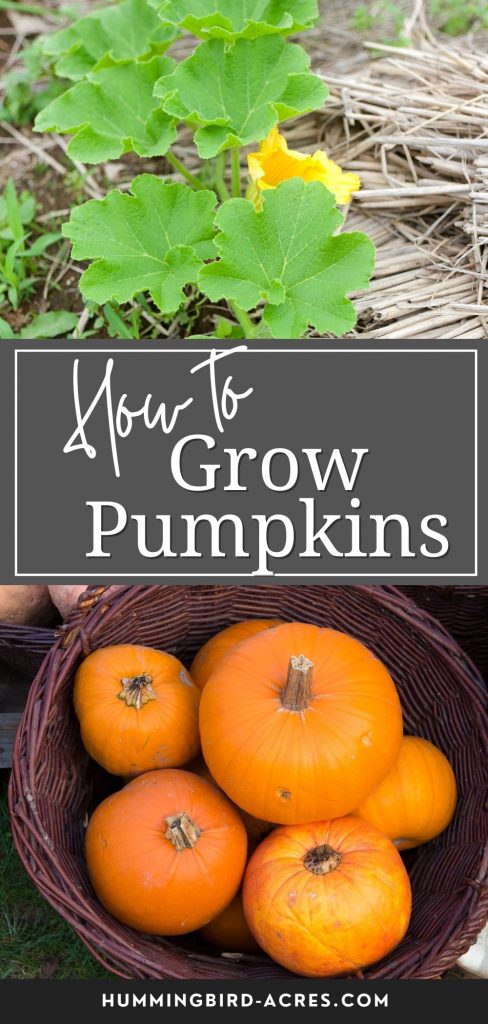How to Grow Pumpkins in Your Garden
If you’ve ever dreamed of growing your own pumpkins, now’s the time! Pumpkins are a great addition to any garden and with a little bit of planning and dedication, you can have delicious home-grown pumpkins ready for harvest in no time. Growing pumpkin plants is not only fun but incredibly rewarding too – once your hard work pays off there’s nothing like using your own homemade pumpkin puree in your favorite pumpkin pie. This blog will offer tips on how best to prepare your patch, which varieties grow well in both cool and warm climates as well as advice on care during the cropping season. Read along to crack open all the secrets that go into growing great pumpkins!
Disclosure: Some of the links below are affiliate links, meaning, at no additional cost to you, I will earn a commission if you click through and make a purchase.
Pumpkin History
Pumpkins have been around longer than you might think! They have been cultivated in the Western Hemisphere for at least 5,000 years and were first domesticated by Native Americans.
Pumpkins have served a variety of purposes throughout history, from being used as utensils to representing harvest time celebrations – even Jack O’Lanterns stem from an old Irish folklore about a man named Jack who was denied entry into heaven and hell.
Today, pumpkins are perhaps most known for their use as decoration during Fall, but they are also a highly versatile fruit that can be used in savory dishes or sweet desserts.
No matter what the context, the pumpkin remains an iconic part of our culture that is sure to continue growing with each passing year.
Planting
Where to Plant
Pick a spot in full sun with space for sprawling vines to run: 50 to 10 square feet per plant.
If space is limited, plant at the edge of the garden and direct vine growth across the lawn or paths. Vines will be bothersome for only a few weeks.
In a very limited space, grow pumpkins in 10-, 12-, and 15-gallon buckets (depending on variety) or try miniature varieties.
Pumpkins are heavy feeders! It’s important to mix aged manure and/or compost into the soil.
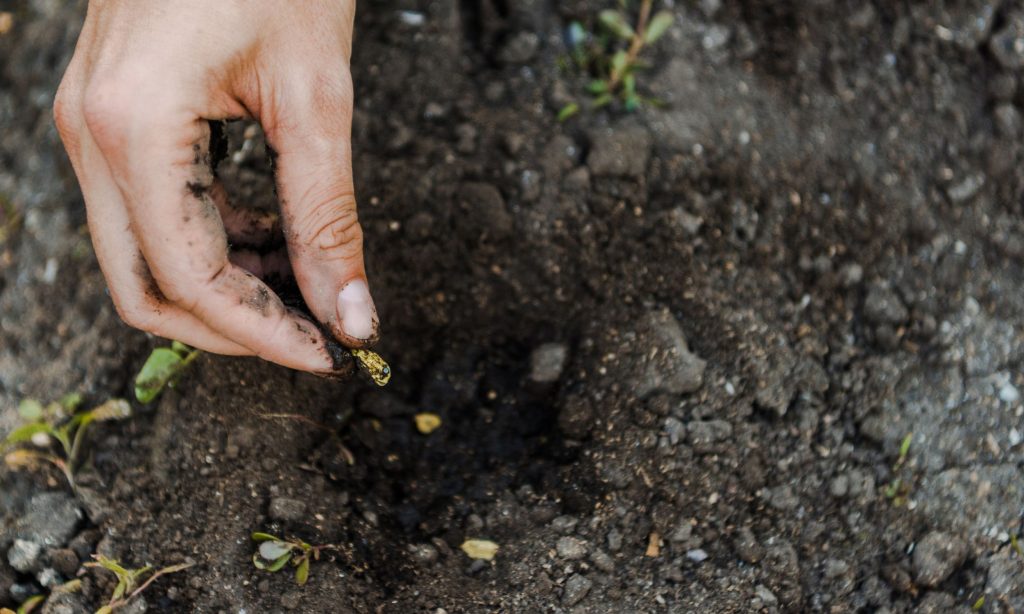
When to Plant
The key is to know when to plant your pumpkin seeds. If you want a big, round pumpkin for carving October jack-o’-lanterns, the time to start is in mid-July in areas where pumpkins grow best. This gives your plants plenty of time for blooming and maturing.
In colder climates like the northern United States, you need to wait until early August or late July for planting your seeds. That way, enough warm days will accumulate for healthy plants and ripe pumpkins in time for fall harvest.
How to Plant
Plant in rows 6 to 10 feet apart. Or, plant in hills 4 to 8 feet apart.
A hill does not mean the soil has to be mounded; it’s a spot containing a group of plants or seeds. Hills warm soil quickly (so seeds germinate faster) and aid with drainage and pest control. Prepare hills by digging down 12 to 15 inches and mixing/filling in with lots of aged manure and/or compost.
In rows, sow seeds 6 to 12 inches apart. Once seedlings are 2 to 3 inches tall, thin to one plant every 18 to 36 inches.
In hills, set seeds 1 inch deep with four or five seeds per hill. Keep seeds moist until germination. When seedings are 2 to 3 inches tall, thin to two or three per hill by snipping out unwanted plants.
If sowing indoors in peat pots, harden off seedlings before transplanting into warm, aged manure/compost-enriched soil.

Stay Organized!!
This garden planner has everything you need to plan a successful garden. There’s space to take notes, set goals, and jot down your wishlist for your garden. Plus, it’s printable!! The Garden Planner and Journal will keep you organized and give you a place to take notes and reflect on your garden.
Tips for Growing Pumpkins
For your pumpkin patch to thrive, give them a deep drink of water each week. Water deeply, in the morning and on very hot afternoons, especially when your plants are setting fruit.Remember that too much moisture can lead to dangerous rot and disease so keep an eye on moisture levels for happy pumpkins throughout harvest season.
Add mulch around your pumpkins will help retain moisture, suppress weeds, and discourage pests.
Pumpkins are heavy feeders. Side-dress with aged manure or compost mixed with water. When plants are about 1 foot tall, just before vines begin to run, fertilize regularly with a high-nitrogen formula. Just before the blooming period, switch to a high-phosphorus formula fertilizer.
Small vine varieties can be trained to grow up a trellis. Larger varieties can be trained upward, too, to support the fruit, usually with netting or old stockings.
Bees are essential for pollination, so be mindful when using insecticides to kill bugs or fungicides to control fungus. If you must use, apply only in the late afternoon or early evening, when blossoms are closed for the day.
Looking for ways to attract more pollinators to your garden check out How to Help the Pollinators.
If your first flowers aren’t forming fruits, that’s normal. Both male and female blossoms need to open. Be patient.
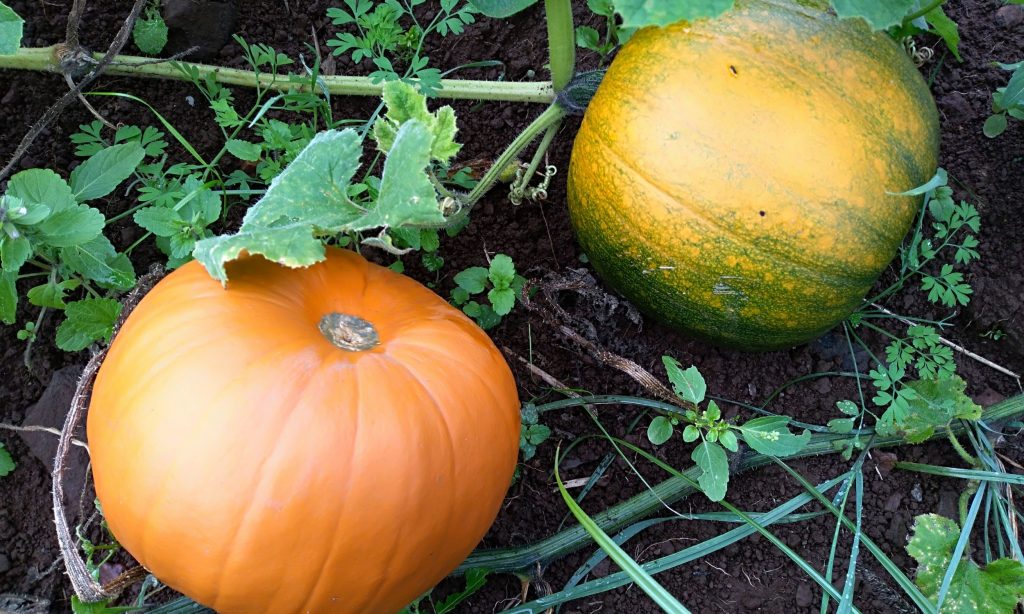
Harvesting Pumpkins
Harvesting your own pumpkins can be a fun and rewarding experience for gardeners of all experience levels. For optimal flavor, you should wait until the pumpkin’s rind has hardened completely, and the stem is dry and brittle.
When you lift it off the vine, about 4-6 inches of the stem should come with it. This will help ensure that your pumpkin retains its freshness longer.
Once picked from the vine, transport your pumpkin to a cool place away from direct sunlight.
Keep in mind that while they are usually good keepers, pumpkins do not last forever: aim to use them up as soon as possible to enjoy their optimal flavor and texture.
Tips for Storing Your Pumpkins
It’s important to know how to preserve it properly.
First of all, make sure you keep your pumpkin out of direct sunlight as much as possible. This helps avoid bleaching or fading of the skin and premature spoiling of the flesh inside.
Additionally, make sure it has proper air circulation by placing it on a covered porch or patio. Avoid areas with lots of traffic like doorways where it might be bumped around by weathered hands and feet.
Lastly, keep your pumpkin hydrated – regular misting with a plant sprayer will help maintain its firm shape and structure for longer.
With these simple tips in mind, your pumpkin can look and last great for many weeks!
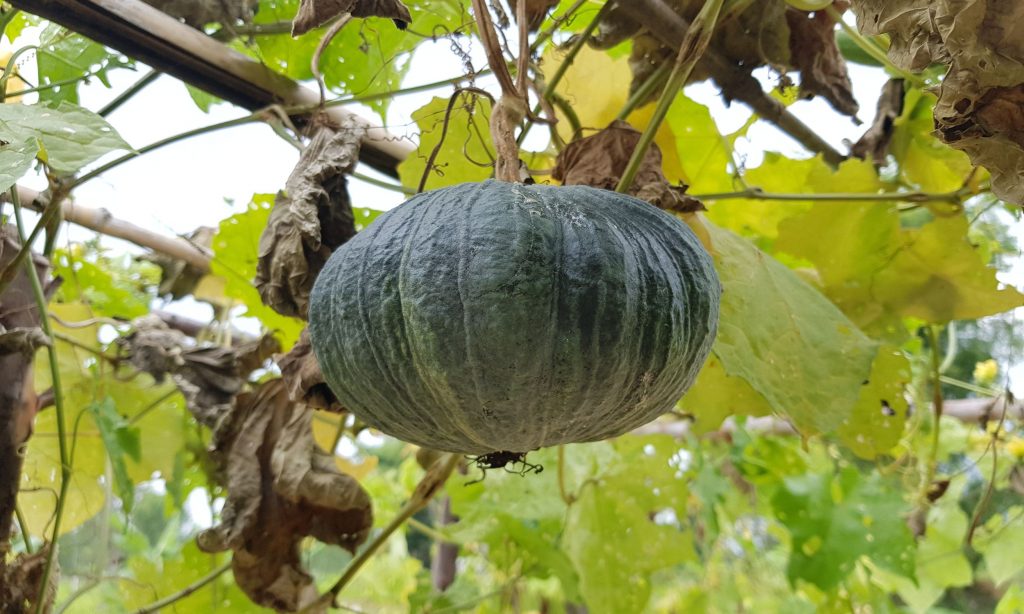
Pumpkin Varieties
Pumpkins for carving
‘Autumn Gold’ great for carving, decorating. All-America Selection winner. Vine variety. Excellent for Jack-o-Lanterns. Days to maturity are generally 100 to 120 days.
The larger ‘Magic Lantern’ and ‘Merlin’ are great for carving and decorating.
Giant pumpkins
‘Dill’s Atlantic Giant’ jumbo variety can grow to 200 pounds. Great for those who want to grow a giant pumpkin.
Vines will spread to 25 feet, so space is a must. Days to maturity are 130 to 160 days, so plant early! Thin to the best one or two plants. Feed heavily but keep cultivation shallow. Remove first 2 or 3 female flowers after the plants start to bloom so that the plants grow larger with more leaf surface before setting fruit. Allow a single fruit to develop and pick off all female flowers that develop after this fruit has set on the plant. Take care that the vine doesn’t root down near the joints to avoid breakage.
‘Big Max’, ‘Big Moon’, ‘Jack O’ Lantern’, and ‘Funny Face’ are some of the best giant pumpkins for carving.
Perfect pumpkins for pies
‘Sugar Treat’ is excellent for cooking and baking. Days to maturity are generally 100 to 120 days.
‘Hijinks’ and ‘Baby Bear’ are both All-America Selection winners and have sweet flesh for pumpkin pie.
‘Cinderella’s Carriage’ is also perfect for pies or soups.
‘Peanut Pumpkin’ also produces very sweet flesh and can be great in pumpkin pie or pumpkin puree.
Colorful decorative pumpkins
‘Jarrahdale’ has blue-green skin and makes for great decorations.
‘Pepitas Pumpkin’ is orange and green.
‘Super Moon’ is a large white pumpkin.
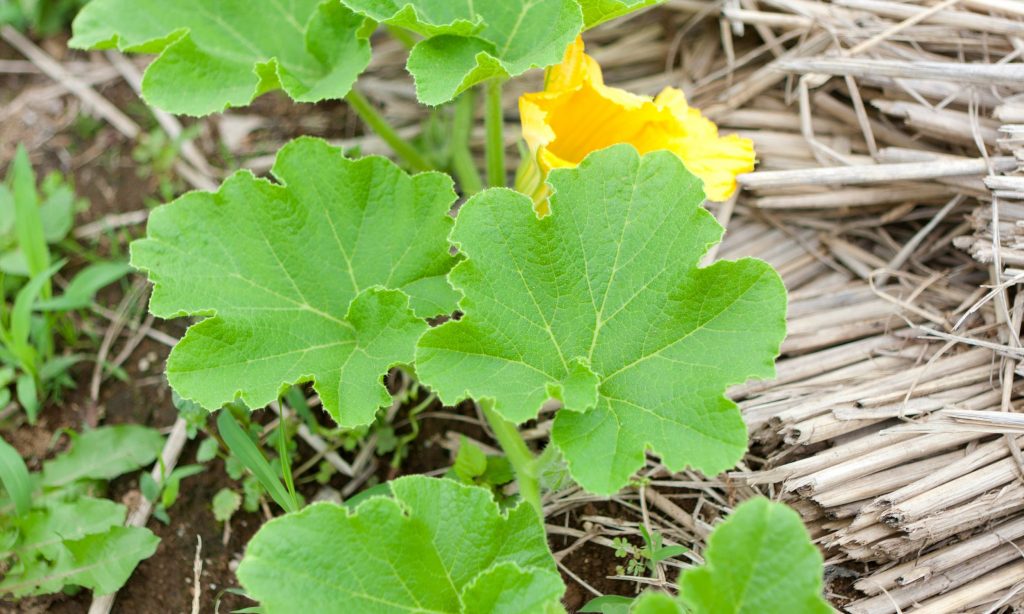
Now that you know how to plant pumpkin seeds, it’s time to get out there and give it a try! If you have never planted pumpkin seeds before, start with a small patch. You can always expand your patch next year if all goes well. Remember to water your plants regularly and pay attention to the soil conditions. With a little bit of care, you will be able to grow healthy pumpkins that are perfect for carving or baking pies.
You may also enjoy these related articles:
Did you enjoy this article? Want to hear more? Stay in touch! Sign up below to receive weekly tips and inspiration for your homestead.
Pin for Later
